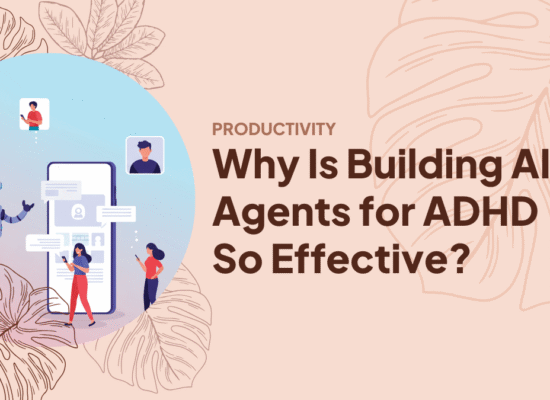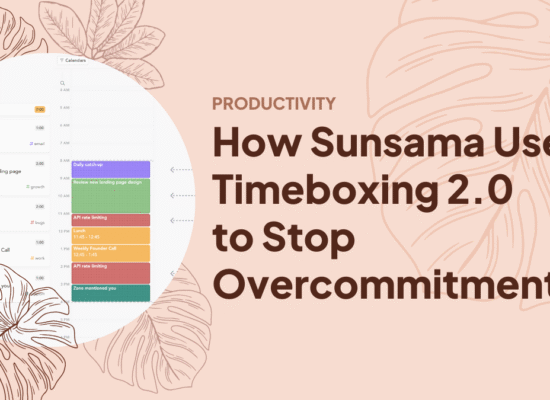Table of Contents
- Why Intentionality Transforms Habit Formation
- Mind Supporting Habits That Create Lasting Impact
- Body Supporting Habits Beyond Exercise
- Integrating Mind and Body for Holistic Wellbeing
- Implementation Strategies for Lasting Change
- Overcoming Common Obstacles
- Creating Your Personalized Wellbeing Framework
Daily choices shape our lives in profound ways. Small actions, repeated consistently, gradually transform our wellbeing more powerfully than occasional grand gestures. As someone who’s worked with countless clients on establishing sustainable routines, I’ve witnessed firsthand how intentional daily habits create the foundation for lasting mental and physical health.
Most of us understand this intuitively. We recognize the morning coffee ritual that centers us (particularly beneficial for those managing ADHD), the evening walk that clears our minds, or the weekly call with a friend that restores our spirits. Yet in the rush of modern life, intentionality often gets sacrificed on the altar of convenience and urgency.
I’ve observed both in my clients and myself how easily we can drift into autopilot, allowing our habits to form by default rather than design. The difference between intentional habits and accidental routines is the difference between steering your ship and being carried by whatever current happens to catch you.
This guide explores how to create daily practices that genuinely support both your mental and physical wellbeing. Not through unsustainable overhauls or trendy quick fixes, but through thoughtful integration of science-backed habits that work together to create sustainable change.
Why Intentionality Transforms Habit Formation
Intentionality is what separates effective habit building from wishful thinking. When we approach our daily routines with conscious awareness, three powerful shifts occur:
First, we move from reactive to proactive living. Rather than responding to whatever demands appear most urgent, we create space for what we’ve determined is most important.
Second, we align our actions with our deeper values. Intentional habits bridge the gap between who we are today and who we aspire to become.
Third, we develop resilience against the constant pull of convenience. Intentionality provides the necessary friction that prevents us from automatically choosing the path of least resistance.
But what does being intentional mean in practice? It means making conscious choices about how you spend your time, energy, and attention rather than defaulting to automatic behaviors. It means designing your environment and routines to support your values and goals.
Research consistently shows that habits stick when they connect to our identity and values. A 2020 study in the European Journal of Social Psychology found that habits framed as expressions of personal values were maintained significantly longer than those motivated purely by desired outcomes.
Mind Supporting Habits That Create Lasting Impact
Our mental wellbeing requires regular maintenance, yet it’s often neglected until problems arise. These practices create the conditions for cognitive clarity and emotional balance:
Mindful Morning Moments
The first minutes after waking set the tone for your entire day. Instead of immediately reaching for your phone, create a buffer zone of intentionality. This might be three deep breaths, a brief meditation, or simply naming three things you’re looking forward to.
This practice activates your prefrontal cortex, the brain region responsible for executive function, before your reactive limbic system takes control. When you begin with intention rather than reaction, you prime your brain for clearer thinking throughout the day.
For those with ADHD, establishing coffee rituals for ADHD management can be particularly effective. The combination of caffeine’s focusing effects with a structured morning routine creates a powerful foundation for the day. Consider brewing your coffee mindfully, using the preparation time as a moment to set intentions and center yourself before the day’s demands begin.
Strategic Digital Boundaries
Our devices fragment our attention and hijack our neurochemistry. Creating intentional boundaries around technology use isn’t just about reducing screen time; it’s about reclaiming cognitive control.
Practical implementations include:
Designating specific tech-free zones in your home, particularly your bedroom and dining area. These physical boundaries help reinforce mental ones.
Scheduling focused work blocks where notifications are disabled. Even brief interruptions can derail deep thinking for up to 23 minutes according to University of California research.
Creating transition rituals between digital and analog activities. The human brain benefits from clear context shifts rather than constant partial attention.
This practice is particularly important for those who require detailed focus in their work, such as psychiatrists in Australia who need to be fully present during patient consultations. Many healthcare professionals report that implementing digital boundaries improves both their professional performance and personal wellbeing.
Cognitive Refreshment Practices
Mental fatigue accumulates throughout the day, but intentional cognitive refreshment can restore clarity. Unlike mindless scrolling, which often increases mental load, true cognitive refreshment involves activities that engage different neural pathways.
Effective examples include brief nature exposure, which research from the University of Michigan shows can improve attention and working memory by up to 20%, or switching between different types of mental work rather than pushing through with diminishing returns.
Body Supporting Habits Beyond Exercise
Physical wellbeing extends far beyond formal exercise sessions. These intentional practices support your body throughout the day:
Movement Integration
Rather than treating movement as something to check off your list, look for opportunities to weave it naturally throughout your day. This approach aligns with our evolutionary design as bodies meant to move frequently in varied ways.
Simple practices include:
Micromovement breaks, where you stand and stretch for 1-2 minutes every hour of seated work. These brief interruptions prevent the metabolic slowdown associated with prolonged sitting.
Walking meetings or phone calls, which simultaneously fulfill communication needs while providing gentle movement. The rhythmic bilateral stimulation of walking has been shown to enhance creative thinking and problem-solving.
Movement snacking, where you accumulate brief bursts of more intensive movement throughout the day. Recent research suggests these movement “snacks” may be as effective for certain health markers as longer workout sessions.
This approach is particularly valuable for those in sedentary professions, including nurses working on short-term nursing contracts in Australia, who often experience physical strain from long shifts. Incorporating movement integration can help mitigate the physical demands of healthcare work and reduce injury risk.
For those dealing with physical limitations or injuries, sports physiotherapy can provide personalized movement strategies that work within your constraints. A qualified physiotherapist can help you design a movement integration plan that supports rehabilitation while preventing further injury.
Nutritional Awareness
Intentional eating goes beyond choosing healthy foods to include how we eat. Developing nutritional awareness means tuning into your body’s signals and creating eating environments that support mindful consumption.
Practical applications include:
Creating pre-meal pauses, where you take a moment to notice your hunger level, mood, and surroundings before eating. This simple practice activates your parasympathetic nervous system, improving digestion and satisfaction.
Removing distractions during meals allows your brain to register satiety signals properly. Studies show people who eat while distracted typically consume more calories while experiencing less satisfaction.
Planning food transitions between work and home. Many of us make our poorest nutritional choices during these boundary moments when willpower is depleted.
Restorative Rest Practices
Quality rest is perhaps the most undervalued component of physical wellbeing. Intentional rest practices recognize that true restoration is an active process, not merely the absence of activity.
Effective rest habits include:
Sleep environment optimization, which means treating your bedroom as a sanctuary for rest rather than an extension of your living or working space.
Consistent sleep scheduling that honors your body’s circadian rhythms. Even on weekends, maintaining sleep and wake times within a one-hour window significantly improves sleep quality.
Intentional recovery between periods of exertion. Whether physical or mental, alternating between engagement and recovery maximizes performance and prevents burnout.
For those with high-stress professions, such as healthcare workers navigating nursing contracts in Australia, prioritizing restorative rest is essential for sustainable performance. Many hospitals now recognize the importance of rest and are implementing better scheduling practices to support staff wellbeing.
Integrating Mind and Body for Holistic Wellbeing
The most powerful habits acknowledge the inseparable connection between mental and physical states. These integrative practices create compound benefits:
Breath Awareness
Your breath offers a direct link between conscious control and automatic bodily functions. Intentional breathing practices can regulate your nervous system, alter your heart rate, and shift your mental state.
Simple breath practices include:
Box breathing (inhale, hold, exhale, hold for equal counts) to activate your parasympathetic system during stressful moments.
Breath counting during routine activities like handwashing or waiting in line, bringing mindfulness to otherwise automatic moments.
Morning breathing rituals that set your nervous system for the day ahead, similar to how athletes use breathing to prepare for performance.
Nature Connection
Regular contact with natural environments provides benefits that span the mind-body spectrum. Research in the field of ecotherapy shows that nature exposure reduces stress hormones, improves mood, enhances immune function, and restores attention.
Practical implementation includes:
Daily outdoor time, even briefly, preferably in morning light to regulate circadian rhythms.
Bringing natural elements into your indoor environment through plants, natural materials, or even nature sounds and images.
Seasonal awareness practices that help you notice and align with natural cycles, countering the artificial constancy of modern environments.
Emerging research in integrative health fields, including studies on pulsed electromagnetic field therapy devices, suggests that our bodies respond positively to alignment with natural electromagnetic frequencies. While traditional nature connection remains most accessible, these technologies offer interesting possibilities for supporting natural body rhythms in our increasingly indoor lives.
Social Connection Rituals
Quality social connections influence everything from immune function to cognitive preservation. Intentional social habits create the conditions for meaningful human contact in an increasingly isolated world.
Effective practices include:
Regular check-in rituals with close connections that prioritize depth over frequency.
Creating tech-free social spaces where attention is fully present rather than divided.
Balancing social exertion with restoration, especially for those who find social interaction energetically demanding.
Implementation Strategies for Lasting Change
Understanding what supports wellbeing is only half the equation. These implementation approaches help turn knowledge into lived experience:
Habit Stacking
Rather than trying to create habits from scratch, attach new practices to existing routines. This approach leverages neural pathways that are already established.
For example, if you already make coffee each morning, use that trigger to add a new habit like a brief stretching sequence or gratitude practice while the coffee brews.
For those with ADHD, coffee rituals for ADHD management can be an excellent anchor for habit stacking. The predictable routine of preparing coffee provides a perfect foundation to attach additional beneficial habits.
Environmental Design
Your physical surroundings shape your behavior more powerfully than willpower. Intentionally designing your environment creates the conditions where healthy choices become the path of least resistance.
Practical applications include:
Creating visual cues for desired habits, such as leaving a book in place of your phone on your nightstand.
Reducing friction for positive habits while increasing it for habits you want to change. For instance, preparing exercise clothes the night before or keeping nutritious snacks at eye level.
Designating specific spaces for specific activities to strengthen contextual cues for behavior.
Something as simple as setting out your contact lenses with your morning essentials can integrate eye care into your routine effortlessly. These small environmental adjustments make consistency much more achievable.
Progressive Implementation
Sustainable change happens gradually. Rather than attempting complete lifestyle overhauls, focus on establishing one small habit before adding another.
Research from University College London suggests that habit formation typically takes between 18 and 254 days, with an average of 66 days before a behavior becomes automatic. This timeline reminds us to be patient with the process of change.
Overcoming Common Obstacles
Even with the best intentions, challenges inevitably arise. These approaches help maintain momentum when motivation wavers:
Expectation Management
Perfect consistency is neither possible nor necessary. Research shows that habit formation continues even with occasional missed days, provided you return to the practice.
Rather than aiming for perfection, build in flexibility from the start. Plan for how you’ll adapt your habits during travel, illness, or unusually busy periods.
Minimum Viable Habits
For each important habit, define the smallest version that still counts. On difficult days, this micro-habit maintains continuity while requiring minimal resources.
For example, if your ideal morning routine takes 30 minutes, create a 5-minute version that preserves the most essential elements. This prevents the all-or-nothing thinking that often derails habit formation.
Periodic Reassessment
As your life circumstances change, so should your habits. Schedule regular reviews of your daily practices to ensure they still serve your current needs and values.
Questions for reassessment include: Does this habit still energize me? Does it align with my current priorities? Has it become automatic or does it still require significant effort?
Creating Your Personalized Wellbeing Framework
True intentionality means developing habits that honor your unique needs, preferences, and circumstances. These steps help you create a personalized approach:
Start by identifying your non-negotiables, the fundamental practices that make the biggest difference for your wellbeing. For some, this might be morning movement; for others, it could be evening reflection time.
Next, consider your chronotype and energy patterns. Design your habit framework to work with your natural rhythms rather than against them.
Finally, build in regular experimentation. Try new practices for defined periods, noting their impact before deciding whether to incorporate them permanently.
For those requiring professional mental health support, psychiatrists in Australia often recommend tracking the impact of new habits on mood and functioning. This data-informed approach helps identify which intentional daily habits provide the most significant benefits for your specific needs.
Remember that intentional habits aren’t about rigid control but about creating conditions where wellbeing can naturally flourish. The goal isn’t perfection but presence, not optimization but alignment.
By approaching daily habits with curiosity rather than judgment, flexibility rather than rigidity, you create a sustainable framework that evolves with you. In this way, intentional habits become not another item on your to-do list but the very foundation upon which a fulfilling life is built.
Key Takeaways:
- Intentional daily habits bridge the gap between who you are today and who you aspire to become.
- Environmental design creates conditions where healthy choices require less willpower.
- Sustainable habit formation typically takes around 66 days of consistent practice.
Transform Your Daily Life Starting Today
Frequently Asked Questions
What does being intentional actually mean in daily practice?
Being intentional means making conscious choices about your time, energy, and attention rather than operating on autopilot or defaulting to convenience.
How long does it take to form a new intentional habit?
Research shows habit formation typically takes between 18-254 days, with an average of 66 days before a behavior becomes automatic.
Can intentional habits help with specific health conditions?
Yes, structured intentional habits can support management of various conditions, from ADHD to chronic pain, especially when designed in consultation with healthcare professionals.
Maria is an accomplished digital marketing professional, specializing in content marketing and SEO. She's a neurodivergent who strives to raise awareness, and overcome the stigma that envelopes around mental health.






